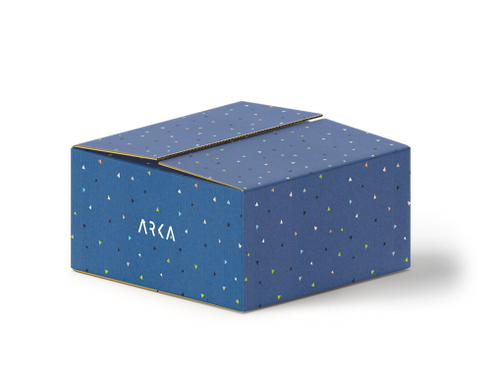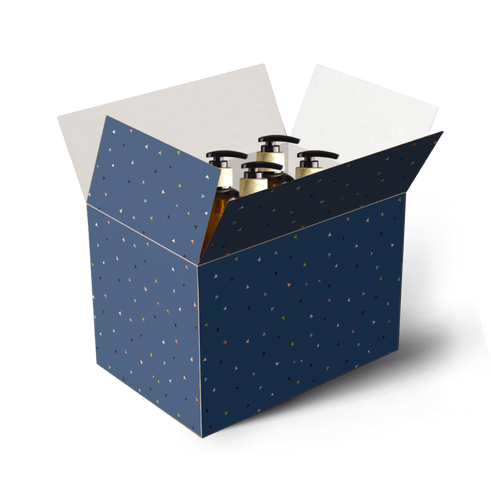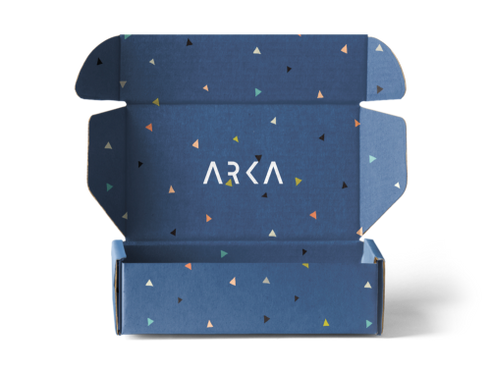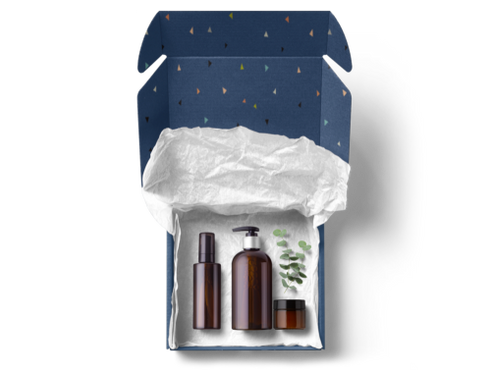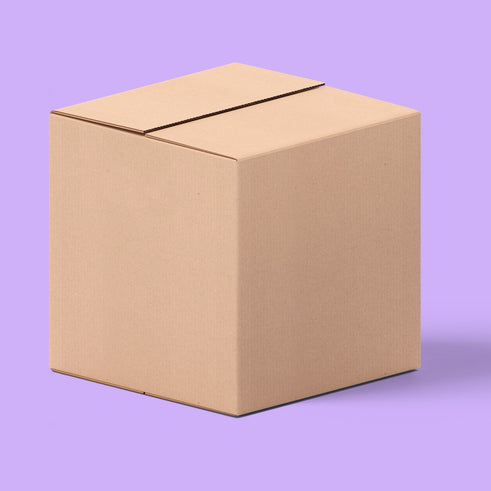Packaging 101: The Complete Guide
- Packaging 101
- Types of Packaging
- Aseptic Packaging
- Blister Packaging
- Biodegradable Packaging
- Bulk Packaging
- Carbon Neutral Packaging
- Circular Packaging
- Clamshell Packaging
- Compostable Packaging
- Cornstarch Packaging
- Corrugated Packaging
- Discreet Packaging
- Ecommerce Packaging
- Flexible Packaging
- Frustration Free Packaging
- Retail Packaging
- Secondary Packaging
- Smart Packaging
- Sustainable Packaging
- What is a PR Package?
- What is a Poly Mailer?
- Packaging Design Ideas
- AI Packaging Design
- Bakery Packaging Ideas
- Bath Bomb Packaging Ideas
- Bath Salt Packaging Ideas
- Body Butter Packaging Ideas
- Body Oil Packaging Ideas
- Body Scrub Packaging Ideas
- Brownie Packaging Ideas
- Cake Packaging Ideas
- Cake Pop Packaging Ideas
- Candle Packaging Ideas
- Candy Packaging Ideas
- Canva Packaging Design
- Chocolate Packaging Ideas
- Cinnamon Roll Packaging Ideas
- Clothing Packaging Ideas
- Coaster Packaging Ideas
- Coffee Bag Design Ideas
- Cookie Packaging Ideas
- Cosmetics Packaging Design
- Cotton Candy Packaging Ideas
- Cupcake Packaging Ideas
- DIY Packaging Ideas
- Dog Treat Packaging Ideas
- Food Packaging Ideas
- Empanada Packaging Ideas
- Etsy Packaging Ideas
- French Fries Packaging Ideas
- Frozen Food Packaging Ideas
- Hair Extension Packaging Ideas
- Handbag Packaging Ideas
- Jewelry Packaging Ideas
- Keychain Packaging Ideas
- Lash Packaging Ideas
- Lip Gloss Packaging Ideas
- Macaron Packaging Ideas
- Minimalist Packaging Ideas
- Mug Packaging Ideas
- New Employee Welcome Kit Ideas
- Packaging Colors
- Packaging Inserts Ideas
- Packaging Logo Design
- Packaging Typography
- Perfume Box Design Ideas
- Pizza Box Design Ideas
- Popcorn Packaging Ideas
- Scarf Packaging Ideas
- Skincare Packaging Design Ideas
- Soap Packaging Ideas
- Sock Packaging Ideas
- Sticker Packaging Ideas
- Sunglass Packaging Ideas
- Sustainable Packaging Ideas
- Tea Packaging Ideas
- Wax Melt Packaging Ideas
- Weed Packaging Ideas
- T-Shirt Packaging Ideas
- Wine Packaging Design Ideas
- What is a Packaging Engineer?
- Types of Packaging Materials
- Chipboard vs Cardboard
- Compostable Packaging Materials
- Alternatives to Plastic Packaging
- Edible Packaging Materials
- Food Packaging Materials
- Are Poly Mailers Recyclable?
- How to Recycle Cardboard Boxes
- How to Recycle Packaging Materials
- Medical Device Packaging Materials
- Mono Material Packaging
- Pharmaceutical Packaging Materials
- Plastic Food Packaging
- Protective Packaging Materials
- Reusing Packaging Materials
- Types of Packaging Foam
- Void Fill Packaging
- What is Chipboard?
- What is Kraft Paper?
- Offset vs Digital Printing
- RGB vs CMYK Printing
- Screen Printing vs Digital Printing
- Screen Printing vs Sublimation
- What is a Dieline in Packaging?
- What is Die Cutting?
- What is Digital Printing?
- What is Flexographic Printing?
- What is Glassine Paper?
- What is Offset Printing?
- What is Spot UV Printing?
- Why is 300 DPI Good for Printing?
- How to Estimate Shipping Costs
- How to Pack Glass for Shipping
- How to Mail a Bubble Mailer
- How to Make a Shipping Label
- How To Measure Box Dimensions and Sizes
- How to Ship Alcohol
- How to Ship Artwork
- How to Ship Books
- How to Ship a Cake
- How to Ship Candles
- How to Ship Chocolate
- How to Ship Clothes
- How to Ship Cookies
- How to Ship Food
- How to Ship a Hat
- How to Ship Jewelry
- How to Ship a Laptop
- How to Ship Perfume
- How to Ship a PC
- How to Ship Perishable Food
- How to Ship Plants
- How to Ship Shoes
- How to Ship Vinyl Records
- Packaging Symbols
- Shipping Large Items
- What is a Delivery Exception?
- What is Shipping Insurance?
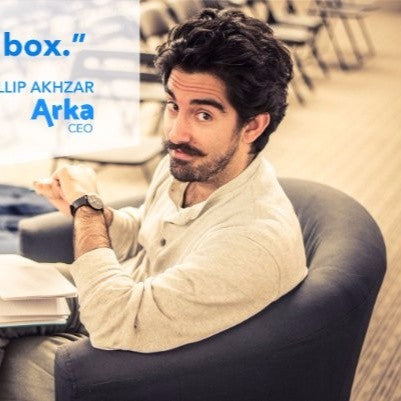
Discover Phillip Akhzar’s journey, the Founder and CEO of Arka, bringing 16 years of expertise in packaging and supply chain logistics. Read more on Arka.
Understanding the Importance of Proper Hat Shipping
Think about the last time you ordered a hat online. You probably had expectations about how it would look and feel when it arrived. Hats are unique products that combine function with fashion, and their three-dimensional structure makes them particularly susceptible to damage during shipping.
Why Hats Require Special Shipping Considerations
The engineering behind hat construction reveals why special care matters. A baseball cap's brim contains layers of buckram fabric and plastic that maintain specific curves through material tension. When external pressure disrupts this tension, the carefully designed arc deforms permanently. The six-panel crown construction distributes weight effectively when worn but becomes vulnerable when unsupported during shipping.
Hat materials behave according to their physical properties. Wool felt consists of microscopic barbed fibers that interlock to create structure. Crushing forces these fibers apart, and unlike synthetic materials, they rarely return to their original configuration. Straw contains lignin, the natural polymer that provides rigidity in plants. This explains why straw hats crack rather than bend when stressed beyond their structural limits.
Common Mistakes to Avoid When Shipping Hats
Over-padding creates unexpected problems. When excessive cushioning material compresses under weight, it forms dense areas that concentrate rather than distribute pressure. This counterintuitive reality means strategic support outperforms volume of padding.
Temperature and humidity fluctuations during cross-country shipping subject natural fibers to extremes equivalent to seasonal changes compressed into days. Materials expand and contract at different rates, creating warping that appears as quality issues rather than shipping damage. Understanding these environmental factors helps explain why identical hats shipped to different regions may arrive in varying conditions.
Consider Material and Shape of the Hat
Different materials require different approaches based on their physical properties. Panama hats, woven from toquilla straw, possess natural flexibility that allows rolling without damage. The same technique applied to felt creates permanent creases due to the different fiber structures. Each material's unique properties dictate optimal shipping methods.
Hat aerodynamics affect how packages move during transport. Wide-brimmed styles create sail effects that cause boxes to shift differently than those containing compact caps. Tall crowns raise the center of gravity, making packages more likely to tip during handling. These physical realities influence packing decisions.

How to Pack a Hat for Shipping: 10 Expert Tips
These techniques emerge from understanding the physics of protection and the realities of modern shipping systems.
Select the Right Packaging Materials and Supplies
Modern packaging materials offer properties that traditional options lack. Closed-cell foams resist moisture while maintaining consistent support. Antistatic materials prevent dust attraction that makes new products appear used. The minimal cost difference between basic and quality materials yields significant returns through reduced damage rates.
Repurposed materials often provide excellent alternatives. Pool noodles, designed to maintain shape while floating, offer ideal properties for supporting hat brims. Their cylindrical form naturally cradles curves while resisting compression.
Choose a Box That's Larger Than the Hat's Dimensions
Box sizing follows predictable principles. Too small creates direct pressure transfer. Too large allows excessive movement. The optimal range, approximately 40% larger than hat dimensions, provides cushioning space without creating instability. This ratio aligns with standard shipping equipment calibrations and handling practices.
Custom hat boxes with non-rectangular designs distribute stacking forces differently than standard boxes. Octagonal shapes, for example, spread pressure across more points, reducing concentrated stress on any single area. Simple geometry changes can significantly impact protection.
Add a Cushioning Base Layer in the Box
Foundation layers serve critical protective functions. Corrugated platforms elevate hats above impact zones while distributing weight across larger areas. This elevation principle, similar to how pallets protect cargo, prevents direct force transmission from drops or compression.
Graduated density systems work by absorbing different impact types at different layers. Firm lower materials provide structure while softer upper layers cradle gently. This mimics natural protection systems found in biology, where hard and soft tissues work together.

Stuff the Crown to Preserve Its Shape
Crown support must balance firmness with flexibility. Materials that compress gradually, like memory foam or loosely packed fabric, maintain shape without creating pressure points. The goal involves supporting natural form rather than forcing rigid structure.
Alternative stuffing materials can serve dual purposes. Clean fabric items provide support while offering customers useful extras. This approach transforms necessary packaging into added value without additional cost.
Wrap the Entire Hat in Protective Material
Layering addresses multiple threats simultaneously. Inner soft layers prevent surface scratches. Middle cushioning layers absorb impacts. Outer barriers block moisture and dust. Each layer's specific function contributes to comprehensive protection that single materials cannot provide.
The sequence matters because materials interact differently. Plastic against felt can cause static buildup. Bubble wrap directly on straw can trap moisture. Understanding material interactions prevents unintended damage.
Secure the Hat Snugly Inside the Box
Suspension systems prevent movement more effectively than tight packing. Creating space around items while preventing shifts requires strategic placement of supports. Cross-bracing with cardboard or inflatable cushions creates stable compartments without compression.
Dynamic restraint systems that allow controlled movement often protect better than rigid immobilization. Small amounts of flex absorb forces that would otherwise transfer directly to products.
Fill Any Empty Space to Prevent Shifting
Void fill materials serve structural and protective roles. Beyond preventing movement, they maintain box integrity under stacking pressure. Biodegradable options that interlock or compress predictably provide environmental benefits without sacrificing protection.
Creative void fill can enhance customer experience. Custom tissue paper, useful samples, or pleasant-scented materials transform necessary packaging into marketing opportunities without compromising protection.
Seal the Box With Durable, Heavy-Duty Tape
Proper sealing technique significantly impacts box integrity. The H-pattern method, applying tape across all seams and stress points, creates interconnected reinforcement that prevents common failure modes. This approach distributes forces across multiple tape sections rather than concentrating on single strips.
Custom packing tape with reinforced fibers provides superior strength while serving as mobile advertising. Quality tape prevents the box failures that cause more damage than rough handling.
Label Clearly and Consider Adding "Fragile" Markings
Labeling psychology influences handler behavior. Clear, specific shipping labels with instructions tend to receive better compliance than generic warnings. Positive messaging ("Thank You for Gentle Handling") often achieves better results than negative warnings ("Do Not Drop").
Visual indicators like arrows and handling packaging symbols communicate across language barriers. QR codes can link to handling instructions, though their effectiveness depends on handler engagement levels.

Add Return Instructions
Including return information serves practical and psychological purposes. Clear procedures reduce customer anxiety about purchases, often decreasing actual return rates. When returns do occur, proper instructions ensure items return in resalable condition.
Care instructions paired with return information provide value while encouraging purchase retention. This combination educates customers while building perceived expertise.
How to Pack Different Hat Types
Different hat constructions require adapted approaches based on their structural characteristics.
Shipping Baseball Caps and Snapbacks
Baseball cap bills form cantilever structures that concentrate stress at attachment points. Supporting bills at optimal angles distributes forces across stronger areas. Slight tilting during packing can significantly reduce deformation risks.
Protecting adjustment mechanisms prevents common damage. Simple foam sleeves or tape over straps prevent snagging that renders caps unusable despite intact structure.
Packaging Fedoras and Wide-Brimmed Hats
Wide brims create leverage that multiplies forces on crowns. Inverting hats uses crown strength to protect more vulnerable brims. This positioning takes advantage of conical crown shapes that naturally distribute pressure.
Geometric support structures that expand to cradle brims prevent oval deformation better than uniform padding. These supports can be created from simple folded cardboard, making them cost-effective.
Preparing Cowboy Hats for Shipment
Cowboy hats evolved for transport in flexible containers like saddlebags. This history suggests that allowing controlled movement prevents damage better than rigid restraint. Combining flexible inner containers with protective outer boxes provides optimal protection.
The tall crown and wide brim combination requires careful balance to prevent tipping during transport. Lower positioning in boxes and strategic weight distribution address these challenges.
Handling Beanies and Knit Caps
Knit construction allows compression without damage, enabling space-efficient shipping. Vacuum sealing dramatically reduces volume while protecting against moisture and odors. Including aromatic elements enhances the unboxing experience without adding significant cost.
Rolling techniques that maintain consistent pressure prevent stretching while creating efficient packing shapes. Using cores like cardboard tubes provides structure without bulk.
Special Considerations for Hats with Embellishments
Decorative elements require individual protection to prevent tangling and breakage. Creating micro-environments for each embellishment, using small wrappings or compartments, prevents damage while maintaining presentation.
Removable decorations can be packaged separately with attachment instructions, eliminating damage risk while creating an interactive unboxing experience.
How Much Does it Cost to Ship a Hat?
Shipping costs follow predictable patterns based on package dimensions, weight, distance, and carrier pricing structures. Most hats trigger dimensional weight pricing, where size matters more than actual weight. Understanding these calculations helps optimize packaging choices.
Timing affects pricing, with mid-week shipments often costing less due to volume patterns. Batching orders and choosing optimal shipping days can reduce costs without affecting service quality.
Shipping cooperatives and volume agreements make enterprise-level discounts accessible to smaller sellers. These arrangements level competitive playing fields while maintaining service standards.

Hat Shipping Insurance
Insurance decisions depend on value, volume, and risk tolerance. High-value items warrant protection, while high-volume shippers might find self-insurance more economical. Calculating break-even points helps determine optimal strategies.
Documentation practices matter more than insurance types. Comprehensive photography and record-keeping expedite claims regardless of insurance source. Digital tools make this documentation increasingly efficient.
How to Select the Right Carrier for Shipping Hats
Different carriers excel in different scenarios. National carriers offer comprehensive networks and tracking. Regional carriers may provide better rates and handling for specific routes. Specialty fashion shippers understand garment handling requirements.
Service level selection impacts both cost and handling quality. Ground services work well for durable hats, while express options' reduced handling time benefits delicate items. Understanding these trade-offs enables informed decisions.
How to Ship Hats Internationally
International shipping introduces customs, duties, and extended transit considerations. Precise product descriptions using appropriate classification codes expedite customs processing. "Shaped textile headwear" classifications often process more efficiently than generic "hat" descriptions.
Extended international transit demands superior moisture protection. Double-bagging with desiccants and humidity indicators helps identify and address moisture exposure. These precautions become essential for trans-oceanic shipments.
Final Thoughts
Mastering how to ship a hat requires understanding physical forces, material properties, and shipping system realities. Each hat type presents unique challenges that informed packing addresses. Success comes from applying these principles consistently while adapting to specific situations.
The investment in proper shipping techniques returns value through reduced damage claims, positive customer experiences, and operational efficiency. As e-commerce continues growing, shipping excellence becomes an increasingly important differentiator.
Whether shipping vintage fedoras or everyday baseball caps, the fundamentals remain constant: understand the product, select appropriate protection, pack with purpose, and ship with confidence. These principles, applied thoughtfully, ensure that every hat arrives ready to serve its purpose in perfect condition.



